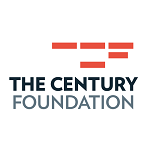Cosmetology Training Needs a Make-Over

The Century Foundation
Carolyn Fast, Peter Granville, Tiara Moultrie
July 14, 2022
This spring, the U.S. Department of Education announced that it was discharging the federal student loans of 28,000 students who attended Marinello Beauty School. In taking such action, the department was following a rule that allows it to discharge any federal loans taken out by students who were deceived by their school.1 The department found that the school misled students about the quality and content of programs; exploited students’ unpaid labor; failed to train students in key skills, such as how to cut hair; and left students without the skills to pass certification exams, find employment, and repay their loans.2
Unfortunately, the case of Marinello Beauty School is not an isolated incident. For-profit cosmetology schools like Marinello have faced multiple actions from regulators3 as well as consumer class actions alleging deceptive practices, exploitation of unpaid labor, and other misconduct.4 The risks to cosmetology students extend beyond such illegal conduct. Students attending such programs typically borrow thousands of dollars through student loans and invest months of their time in training,5 only to receive near-poverty-level earnings after graduation. Three years after completing their program, the average cosmetologist earns only $16,600 a year,6 which is $8,600 below the average earnings of workers with only a high school diploma, and only $3,000 above the single-person poverty guideline.7 In addition, cosmetology students graduate with an average of $10,200 in student loan debt.8
The number of cosmetology students at financial risk after attending these schools is large. Cosmetology schools enrolled close to 200,000 students in 2018–19.9 The programs train hairdressers, makeup artists, and manicurists. Three-quarters of cosmetology programs are offered by for-profit schools.10 Over 1,000 cosmetology schools are funded through federal student loans and grants.11 Cosmetology schools received more than $1 billion in federal loans and grants in 2019–20.12 Unfortunately, the federal loans and grants invested in these institutions have not translated into adequate earnings for program graduates.
Women and people of color make up a disproportionate share of cosmetology graduates. Ninety percent of cosmetology program graduates are women.13 Black and Latino/a students also make up an outsized share of cosmetology graduates: Black students receive 19 percent of cosmetology certifications but comprise 13 percent of the postsecondary student population,14 and Latino/a students receive 25 percent of cosmetology certifications but comprise 19 percent of the student population.15 Most cosmetology students also tend to be low-income when they enroll: 54 percent of students who attend cosmetology schools16 receive federal Pell Grants, which are awarded to students with high levels of financial need, compared with just 34 percent of all undergraduates.
Continue Reading
Share








